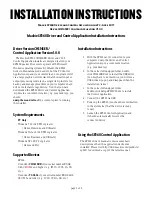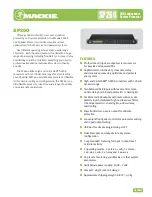
Maintenance
150-431-115-01, Revision 01
22
September 22, 1998
HLU-431 List 1E
If a customer of a fractional T1 service fills any of the unused DS0 channels with information other than an idle
code of all ones, the HiGain system blocks this information from reaching the remote end of the circuit and
replaces those DS0 channels with an all ones idle code.
The result of blocking the idle code is that the CRC checksum delivered to the remote end (when the payload is
in the BSF format) will not match the checksum calculated by the remote T1 CSU. This implies errors are being
made on the loop when actually the blocking function created the CRC errors. Enabled DS0 channels pass
error-free.
In order to avoid this condition, fractional T1 customers should fill the unused time slots with an idle code. This
is a common capability on Fractional T1 CSU/DSU, D4 channel banks, and other CPE devices capable of
connecting to Fractional T1 service.
DS1 Line Code Option
The DS1 line code option should always be set to conform to the type of DS1 service, AMI or B8ZS, being
provided by the HiGain system. The AUTO mode, which can adapt to either AMI or B8ZS, should only be used
in applications that require it (such as when HiGain acts as a standby circuit to DS1 circuits whose line codes are
not known or may be both AMI and B8ZS) since it has the following two limitations. The AUTO mode will induce
one BPV in the DS1 bit stream whenever it switches from AMI to B8ZS. The AUTO mode allows each HiGain
end, HLU and HRU, to set its DS1 mode to the code it is receiving at its local DS1 input port. This makes each
unit’s code independent of the DS1 code being received at the distant DS1 input port. Thus if the line codes being
received by HiGain are different in each of the two DS1 directions, the HiGain DS1 output codes will not match
their respective DS1 input codes at the other end. This could cause the customer’s received data to be AMI instead
of B8ZS and thus violate the one’s density rules by having excessive zeroes.
Margin Alarm Threshold
To set the Margin Alarm Threshold:
1
Select
from the System Settings Main Menu screen.
2
Enter the desired minimum acceptable alarm threshold from the 0 to 15 dB range. This causes a system alarm
to occur if either the margin on HDSL loop 1 (MAL1) or loop 2 (MAL2) drops below the selected threshold
value.
Since the margin can never drop below 0, choosing
for the margin threshold turns the margin
alarm off.
















































